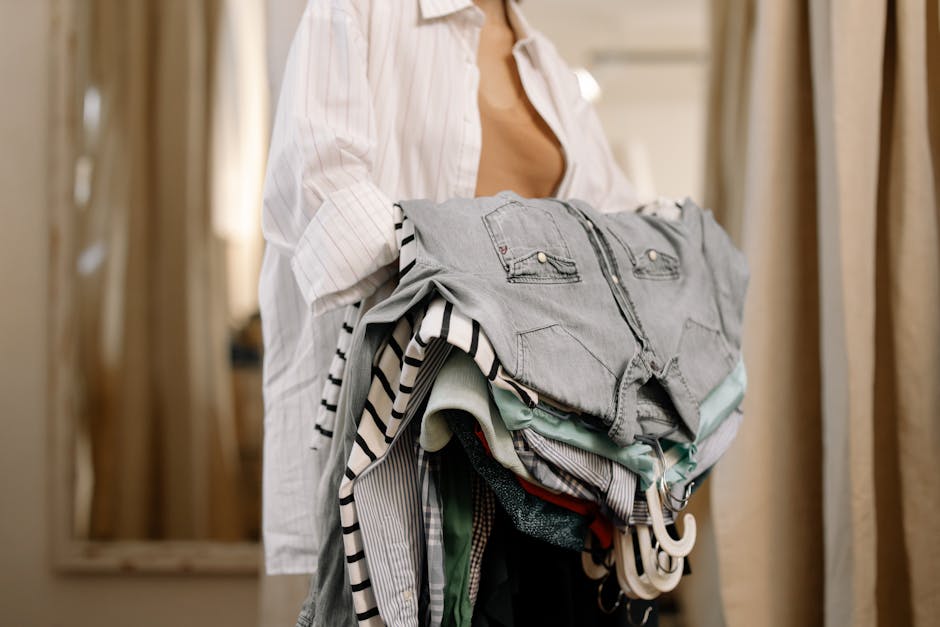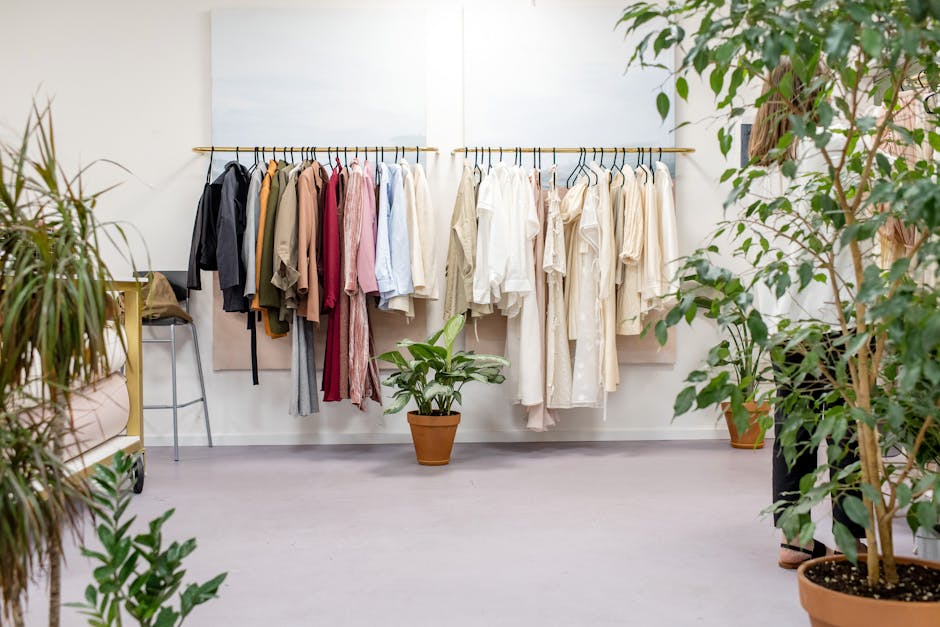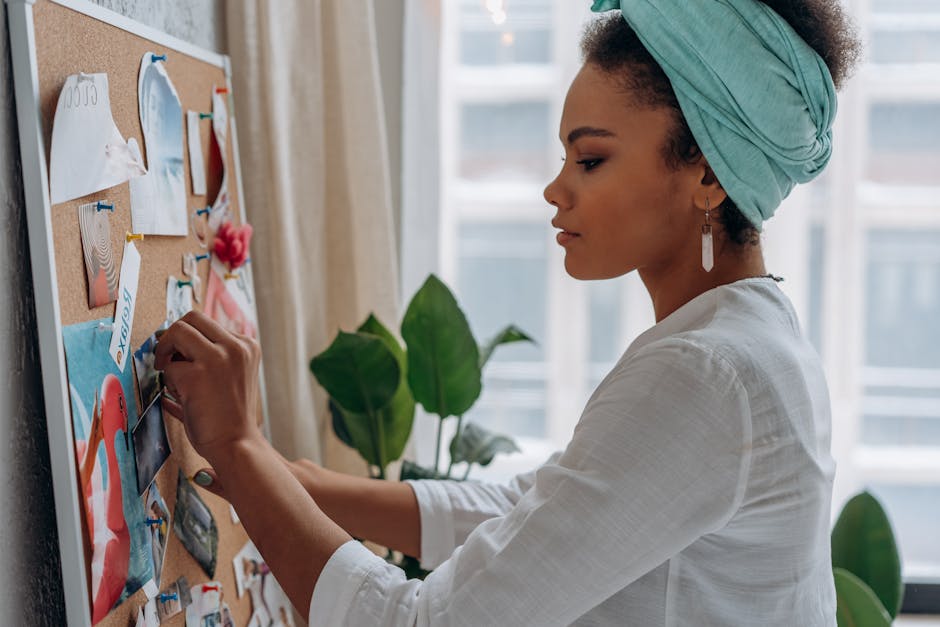Unlock Sustainable Style: Build a Zero-Waste Wardrobe Today
Are you tired of fast fashion's environmental toll and seeking ways to elevate your personal style while being eco-conscious? The zero-waste wardrobe movement is not just a trend; it's a lifestyle choice that allows you to express your individuality through thrifted treasures and upcycled fashion. This guide will navigate you through the transformative realm of sustainable living and eco-friendly tips, empowering you to look good while feeling good about your contributions to the planet.
The Essence of a Zero-Waste Wardrobe
Building a zero-waste wardrobe begins with understanding waste—not just the material aspects, but what your unique style communicates. Transitioning from a throwaway culture to one that values longevity can feel daunting, especially when the fashion industry pushes new trends at a rapid pace. However, it's time to reclaim your style and your planet.
One of the most compelling reasons to pursue a zero-waste wardrobe is the meaningful impact it has; consider that 2.5 million tons of clothing are sent to landfills each year in the United States alone (source: - Clean Up Australia). This staggering figure exemplifies the urgent need for a paradigm shift. Let’s explore how to curate a wardrobe that’s sustainable, chic, and entirely yours.
Thrifting: The Treasure Hunt of Sustainable Fashion
Thrift stores are the playgrounds of the eco-conscious fashionista. Here are practical tips to make the most of your treasure hunt:
1. Know What You Need
Before stepping into a thrift store, create a list of items that will complement your existing wardrobe. This isn’t about restricting your creativity; rather, it’s about making thoughtful choices to reduce impulse buys. Essential items might include versatile basics or statement pieces that resonate with your personal style.
2. Look for Quality over Quantity
When sifting through the racks, prioritize quality. Look for well-tailored clothing made from materials like organic cotton, linen, or Tencel. These fabrics not only last longer but also have a lower environmental footprint. Study labels to learn about the brand's manufacturing processes and materials. For more insight into green practices, check out our article on debunking myths about sustainable living.
3. Be Open-Minded
One of the most exciting aspects of thrifting is the unexpected finds. Embrace the thrill of discovery—vintage jeans that can be tailored, quirky jackets that can be styled in innovative ways, or beautiful dresses waiting for a gorgeous upcycle.
Upcycling: Expanding Possibilities in Fashion
Upcycling is your outlet for creativity and sustainable fashion expression. Here’s how to get started:
1. Distressing and Altering Old Garments
Instead of tossing out those jeans that no longer fit, consider distressing them. Pick up scissors and sandpaper to create trendy cuts; this simple transformation not only updates the piece but also infuses it with your unique touch. Use your basic sewing skills to alter other clothing pieces—hem lengths, add patches, or even mix and match fabrics to enhance your personal style.
2. Repurposing Accessories

Don’t overlook beautiful accessories like scarves or bags that can transform old outfits. A beaten-up bag may simply need some embellishment or a new strap to look fresh again. Transforming old jewelry into new favorites through DIY projects can be a fun activity as well.
3. Upcycled Fashion Projects

Let your creative juices flow with community workshops or online tutorials that guide you through upcycling projects. From creating cushion covers from old shirts to designing fashionable tote bags, the possibilities are endless. Check out more about the art of upcycling in our article on turning waste into wonder.
Curating an Eco-Friendly Capsule Collection

A capsule wardrobe is an effective strategy for anyone looking to minimize waste while maximizing style. It revolves around a limited selection of versatile items that can be mixed and matched.
1. Identify Core Pieces

Choose timeless items that can effortlessly transition from day to night. High-quality staples, like a tailored blazer or a classic little black dress, should anchor your capsule collection, providing adaptability to suit various occasions.
2. Invest in Sustainable Brands

Explore brands that prioritize sustainable practices. Look for companies that utilize recycled materials or ensure fair labor standards. Adopting sustainable brands into your wardrobe isn’t just a tick in a box—it’s a step towards supporting the larger movement for eco-friendly practices. For deeper insights on eco-conscious brands, check out our myth-busting guide on sustainable fashion.
3. Seasonal Switch-Up

Adapt your wardrobe seasonally while staying within a defined range. Evaluate what you wear and use to determine which pieces can sustain the elements of each season while maintaining sustainability and style.
An Eco-Friendly Mindset: Shifting from Wasteful Habits

Transitioning to a zero-waste wardrobe requires a mindset shift in consumer habits, deeply rooted in mindfulness.
1. Embrace Slow Fashion

Slow fashion focuses on quality and craftsmanship rather than speed and mass production. By adopting this approach, you contribute to a more ethical fashion ecosystem. Invest in fewer items that sustain the test of time rather than temporary fads.
2. Host Clothing Swaps

Organizing vintage pop-up events with friends or community members promotes a culture of reusing and sharing. Clothing swaps offer a sustainable way to refresh your wardrobe while fostering camaraderie.
3. Track Your Footprint

Understanding the environmental impact of your wardrobe extends beyond just clothing. Look into the “hidden carbon footprint” associated with electronics, as detailed in our article on uncovering digital life’s hidden emissions. Making conscientious choices in every aspect of living culminates in significant sustainability.
Care for Your Wardrobe: The Lasting Impact Matters

1. Follow Care Instructions

By properly maintaining your clothes, you're extending their lifespan and reducing the need for replacements. Follow care instructions—washing in cold water, avoiding dry cleaning chemicals, and hanging to dry when possible.
2. Repair Instead of Discarding

Invest in a sewing kit or learn some basic repairs online. Patching a tear or renewing buttons not only extends the life of your clothes but also adds character.
3. Store Wisely

Store seasonal clothes mindfully. Consider using natural moth repellents, like lavender sachets, rather than harmful chemicals.
Final Thoughts: Let Your Wardrobe Reflect Your Values
Crafting a zero-waste wardrobe is more than just a trend; it’s a commitment to sustainable living that reflects your values and unique personality. As you embark on this exciting journey, remember the impact your choices have on the planet. Embrace the unknown with thrift store treasures and upcycled gems, allowing your identity and advocacy for sustainable living to shine through.
Remember, building a wardrobe with purpose allows you to express who you are while contributing positively to the environment. Each decision—be it thrifting, upcycling, or choosing sustainable materials—is a step towards a brighter, eco-conscious future.
As you venture forward, refer back to our resources, explore new ideas, and engage with communities that share your passion for sustainable fashion. The world of zero waste is waiting for you—are you ready to uncover its treasure?










